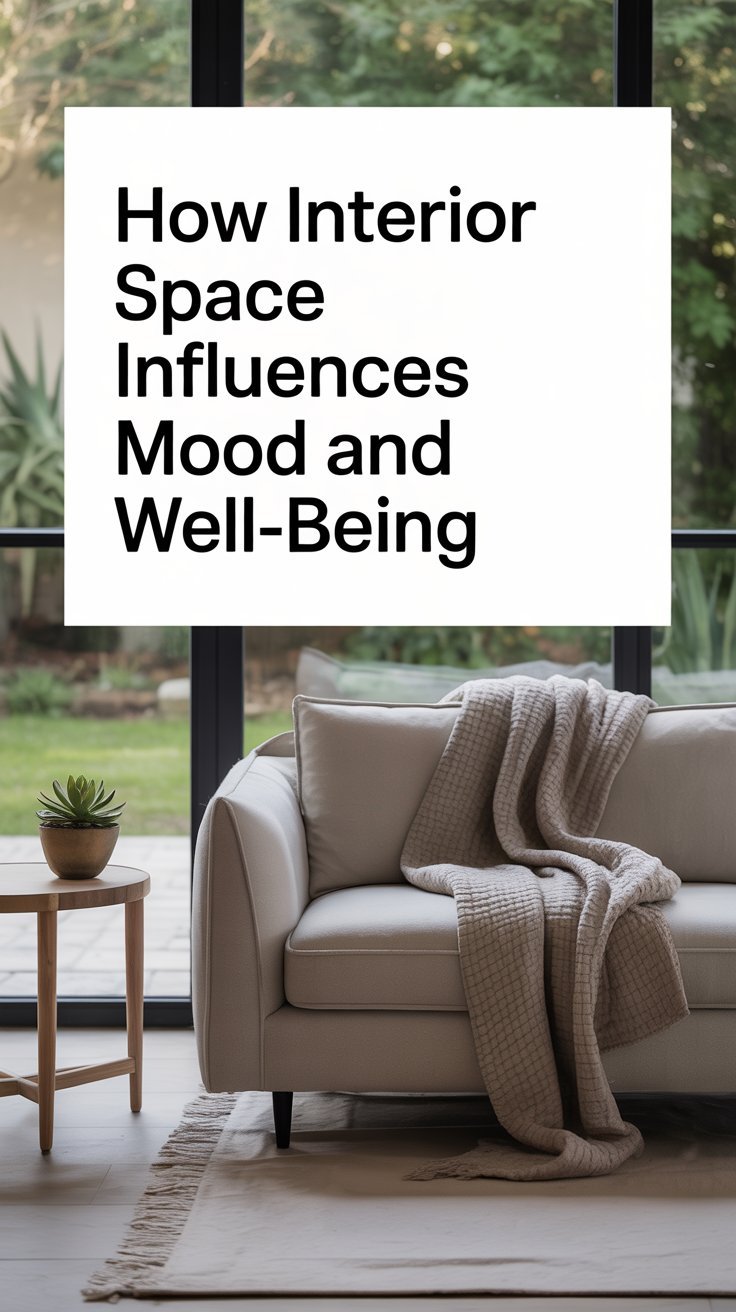How Interior Space Influences Mood and Mental Well-Being
Interior spaces profoundly influence human mood and mental well-being, a concept gaining recognition in fields like therapeutic architecture and environmental psychology.
Given that people spend a significant portion of their lives indoors, particularly in urban societies, designing these environments with an understanding of their psychological impact is crucial for promoting positive emotional states and overall health.
Here’s how various elements of interior space influence mood and mental well-being:
1. The Concept of Therapeutic Architecture and Salutogenesis
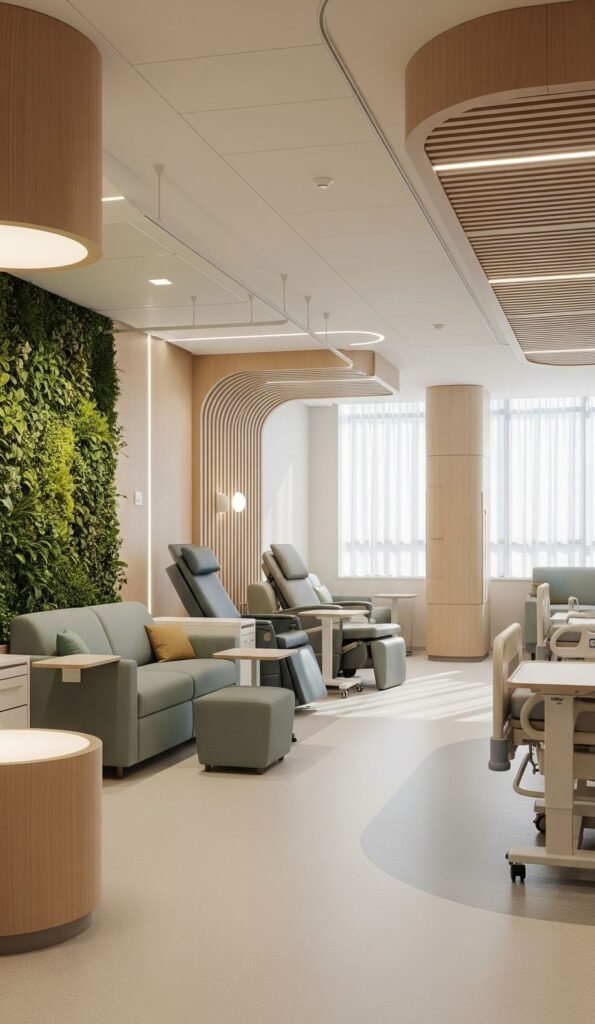
Therapeutic architecture is based on the belief that the design of an environment profoundly impacts emotional well-being. It aims to create spaces that promote healing, comfort, safety, and engagement, especially critical for individuals grappling with mental distress, such as those in drug rehabilitation centers. This approach aligns with the salutogenic theory, which focuses on factors that promote health and well-being rather than just the origins of diseases.
By incorporating salutogenic principles, therapeutic design seeks to create environments that support and enhance recovery by fostering a sense of coherence, which includes comprehensibility (understanding one’s situation), manageability (feeling capable of handling challenges), and meaningfulness (finding purpose in life experiences).
2. Impact of Natural Light and Fenestrations
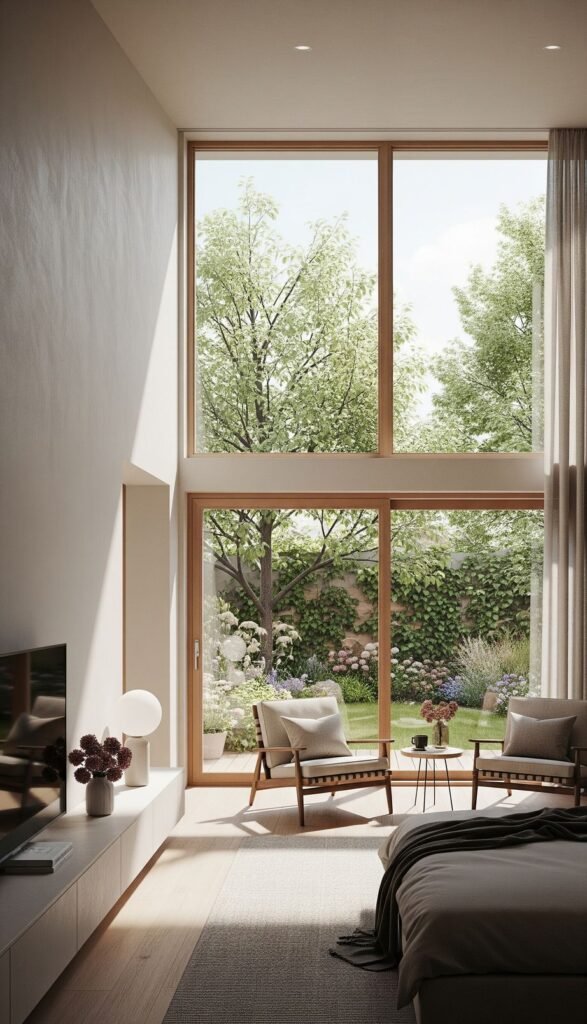
Natural light is a fundamental element affecting our visual perception and emotional state. Studies show that natural lighting conditions in housing significantly impact people’s perceptions of happiness and sadness.
- Mood and Well-being: Increased amounts of daylight entering a home lead to greater impacts on perceived happiness and sadness. Settings with ample natural light promote vitality, reduce anxiety, and improve mood. Conversely, prolonged time indoors can increase negative emotions like anxiety, stress, and sadness.
- Healing and Recovery: Research indicates that patients with direct views of the outside world experience accelerated healing and require fewer pain medications. Views of nature, through sight, touch, hearing, and smell, contribute to a more supportive and calming atmosphere, aiding recovery.
- Circadian Rhythm and Mental Health: Daylight influences the circadian rhythm, affecting hormone secretion (cortisol and melatonin) and behaviors like lethargy and sleep. Shorter days with less sun exposure can increase cortisol (linked to stress) and contribute to seasonal affective disorder (SAD). Bright light therapy can have antidepressant effects.
- Design Factors:
- Window Size: Windows covering more than 20% of a wall improve happiness and sadness indicators, with over 40% producing the largest gains in emotional subjective well-being (E-SWB). Prioritizing energy or cost reduction by minimizing window sizes can negatively impact inhabitants’ emotional well-being.
- Window Orientation: Windows facing the equator (sun-facing) significantly increase perceived happiness.
- Distance from Nearby Buildings: Greater distance from surrounding buildings (more than 10 meters) positively impacts happiness and reduces sadness. Closer proximity (e.g., 5 meters) can significantly reduce happiness and increase sadness.
- Room Type: Natural light improvements have benefits across various rooms, with the living-dining room showing the most pronounced positive impact on E-SWB.
3. The Psychology of Color
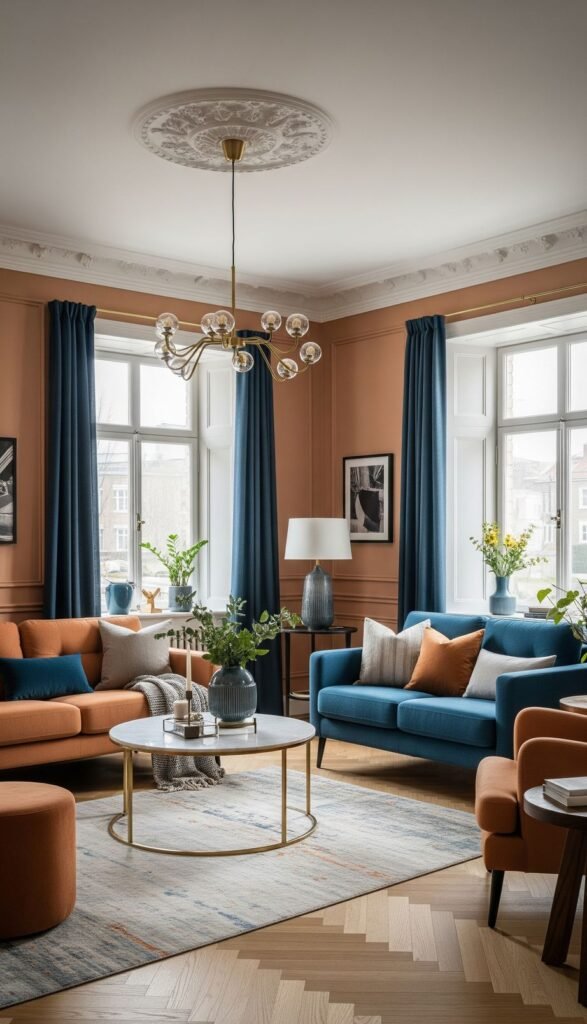
Colors have a remarkable ability to influence our subconscious mind, evoke specific emotions, and affect our mental state and overall well-being.
- Emotional Impact:
- Warm hues (like red, orange, yellow) can create a sense of energy, excitement, and stimulate creativity.
- Cool tones (like blue, green, lavender/purple) promote calmness, relaxation, serenity, and a soothing atmosphere.
- Green specifically is associated with nature, harmony, and balance, and exposure to it can positively impact mental health and reduce stress.
- White is a common dominant color that typically doesn’t affect moods. It signifies purity, cleanliness, and simplicity, making rooms feel larger and brighter.
- Brown symbolizes stability and connection to nature, evoking feelings of comfort and coziness.
- Black exudes elegance, mystery, and drama, creating striking visual contrast and depth.
- Visual Perception: Lighter colors make a room feel more spacious and open, while darker shades create an intimate ambiance.
- Therapeutic Application: Color therapy is recognized for improving mood and alleviating stress by stimulating the nervous system. Architectural design should consider how colors alter space perception and evoke emotions.
4. The Influence of Sound (Aural Architecture)
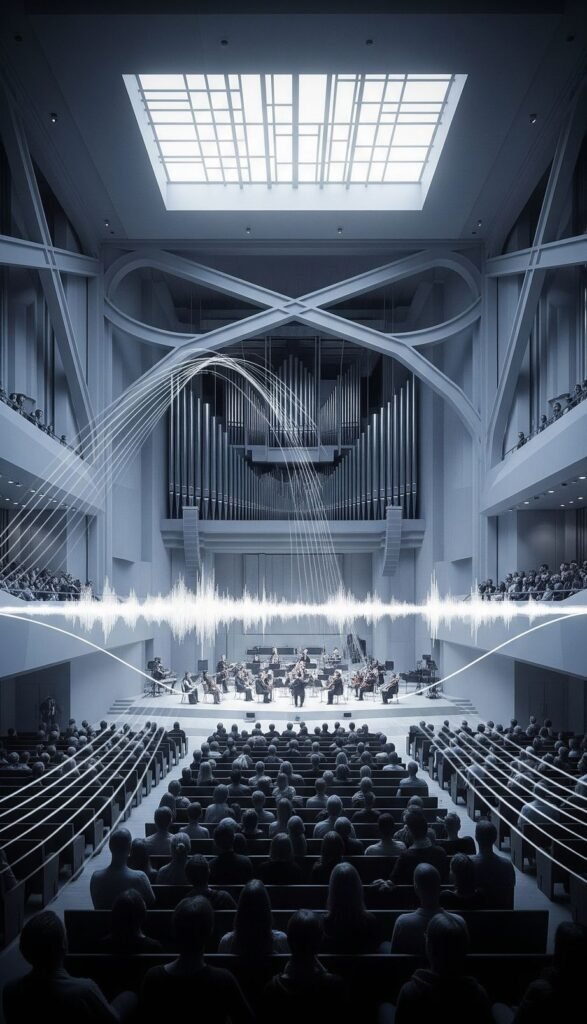
The way sound behaves within a building, known as “aural architecture,” can unconsciously alter how we feel about a space.
- Comfort and Stress: Noisy work and home settings have been linked to annoyance, depression, and anxiety. Difficulty concentrating due to office noise significantly reduces human performance. Unwanted interruptions and lack of auditory privacy contribute to discomfort and stress.
- Emotional Impact: The interaction of sound with a building’s physical structure can significantly alter moods and emotions. For example, rooms with loftier ceilings can encourage abstract thought, making people feel freer. Specific frequencies can even shift brain activity to emotional areas.
- Design Considerations: Buildings should be acoustically satisfying, not just functional and aesthetically pleasing. Architects are increasingly considering shapes and materials that influence sound. Sonically interactive structures have the potential to function as immersive sonic therapy rooms for conditions like PTSD and depression. Tools like “auralisations” (acoustic modeling software) allow architects to evaluate and adapt designs based on sound.
5. Spatial Organization: Openness, Privacy, and Clutter
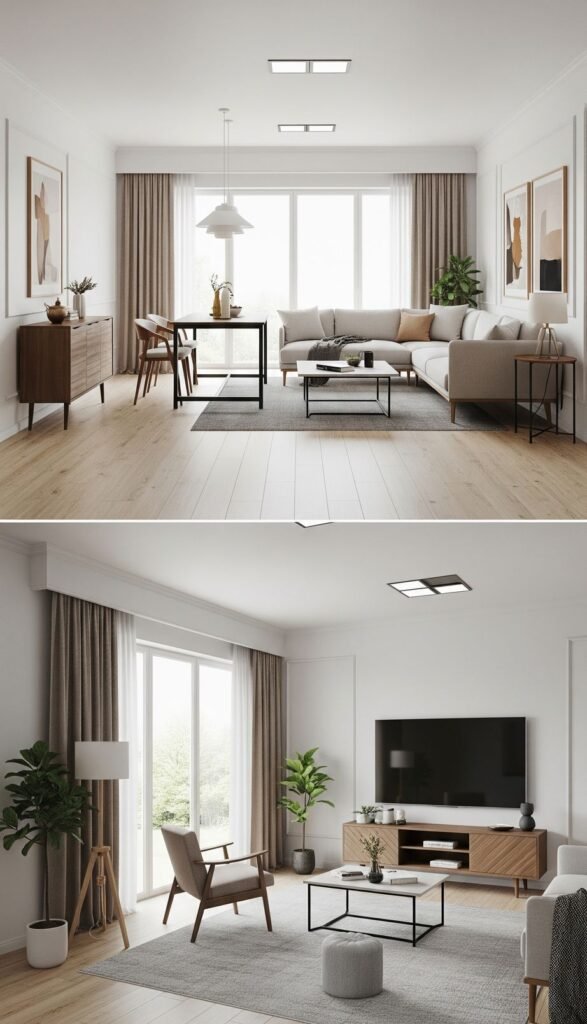
The layout and organization of a space significantly impact mental well-being.
- Privacy and Personal Space: Respecting privacy and confidentiality is crucial in therapeutic and working environments. Lack of privacy, such as shared sleeping quarters or constant supervision, can make individuals feel confined and lead to a desire to leave. In open-plan offices, lack of personal space and privacy is a major source of dissatisfaction, leading to discomfort, stress, reduced autonomy, and hindering confidential conversations. Privacy is classified as an environmental stressor.
- Open Spaces and Social Interaction: While open spaces can foster social connections, support networks, and a sense of community, and promote collaboration and communication, they can also lead to constant visibility, distractions, and reduced concentration due to noise and interruptions.
- Clutter: Disorganized and accumulated items (clutter) have significant negative mental health effects.
- Increased Stress: Clutter makes it difficult to relax and can lead to higher stress hormone levels.
- Reduced Focus: It can be distracting, making it harder to think clearly and concentrate.
- Procrastination: Cluttered environments are linked to increased procrastination.
- Relationship Strain: Clutter can cause arguments, social isolation, shame, and hinder clear communication.
- Impulse Control: A cluttered environment can impair impulse control.
- Lower Quality of Life and Well-being: Leads to constant frustration, decreases overall life satisfaction, and harms subjective well-being.
- Solutions: Decluttering, organizing, and maintaining cleanliness promote a sense of control, calmness, and improved mood. Providing specific, adjustable workspaces, and flexible spaces that can adapt to changing needs, empowers individuals and enhances engagement.
6. Other Contributing Elements
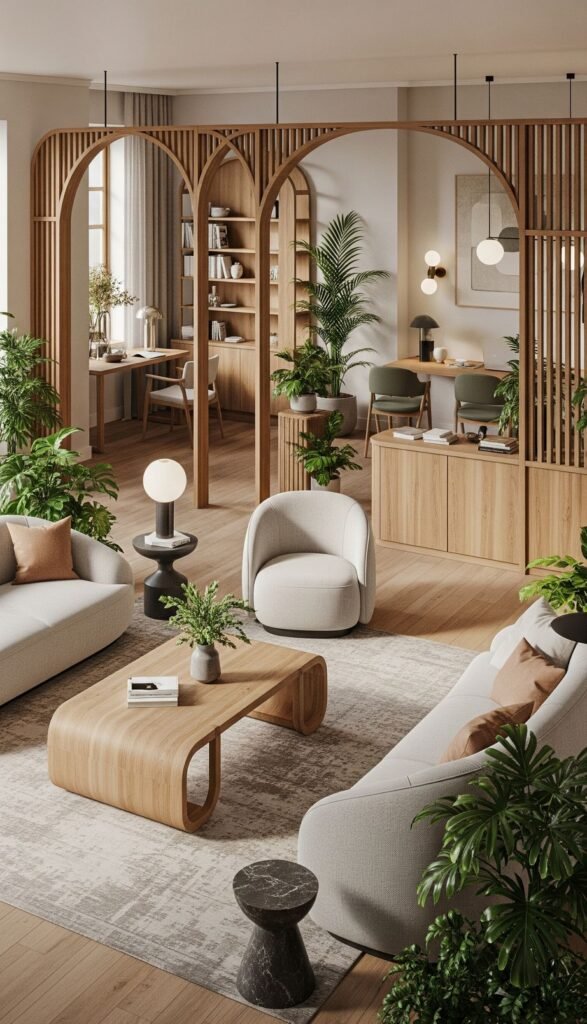
- Materials and Shapes: The use of therapeutic materials like wood can bring a soothing feeling, and wood with its grain visible is known to relax the autonomic nervous system. Curved shapes, rather than sharp and angled ones, can create a more pleasant and less threatening feeling of space.
- Plants and Natural Elements: Incorporating plants, flowers, and other natural elements indoors can remind a person of life and growth, influencing mental flexibility. Being surrounded by green plants can make people feel calm, simulating a rich and abundant environment.
- Functional Efficiency: A well-planned room that is functionally efficient and appropriately furnished (e.g., adequately sized furniture, comfortable furnishing) can contribute to feelings of comfort and reduce anxiety and frustration.
